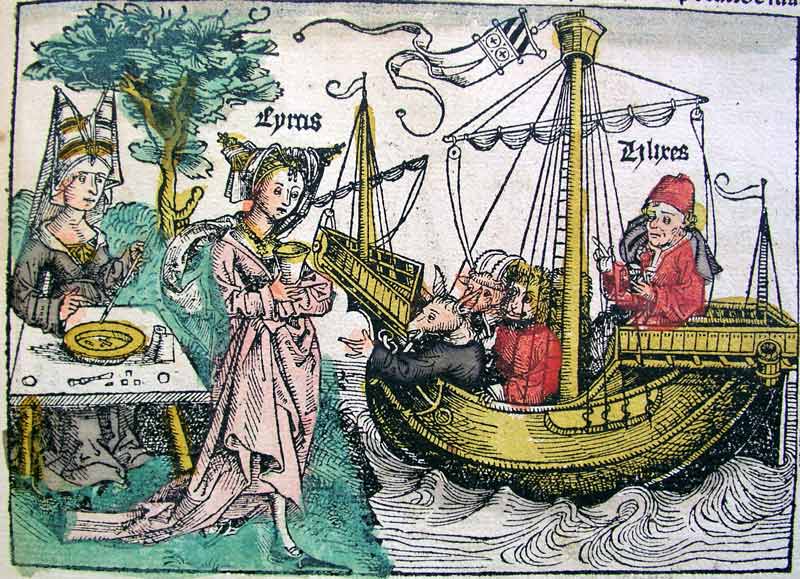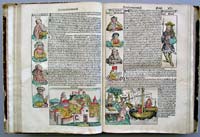Germany, (1434-1519)

-
Odysseus and Circe
- (1493), woodcut, hand colored
- illustration from:
The Nuremberg Chronicles.
Nuremberg: Anton Koberger (1493). - Morse Library of Beloit College
-
Editor’s Note:
The image above is from a colored edition of The Nuremberg Chronicle. This book (also known as Liber Chronicarum or Book of Chronicles) is essentially a Medieval world history. It is one of the best documented of early printed books. There were many individuals involved in its creation – author(s), patrons, publishers, artists, printers, etc., and it was printed in several languages and multiple mass-produced editions.
Wolgemut’s interpretation of Ulysses and Circe in the Odyssey was in the gothic style. Wolgemut has portrayed the scene with the courtly aspect of fifteenth-century Germany. Circe has the attire of a Nordic Princess and is accompanied by a servant. The enchantress is seen as a symbol of human slavery to the baser passions. The men are transformed into all sorts of animals, not just pigs as in the original story, each symbolizing one of the seven sins. Ulysses and Circe are identified in the image by their names printed in Gothic letters in order to help the viewer read the image correctly.
Here is a view of the entire page where this image is found:
About the Artist
Michael Wolgemut (1434-1519) was a German painter, woodcut designer, engraver and carver. Wolgemut (also Wohlgemuth) worked mainly in Nuremberg. He was head of a large workshop which produced altarpieces, memorial pictures, portraits and designs for glass paintings.
Wolgemut and his shop produced hundreds of designs for illustrated books such as the Nuremberg Chronicle of 1493. His engravings are characterized by vigor, drama, complex movement, and forceful characterization. [DES-01/11]
ADDITIONAL INFORMATION:
The Morse Library of Beloit College offers a detailed history of their edition of the Nuremberg Chronicle and color images of the entire text.

